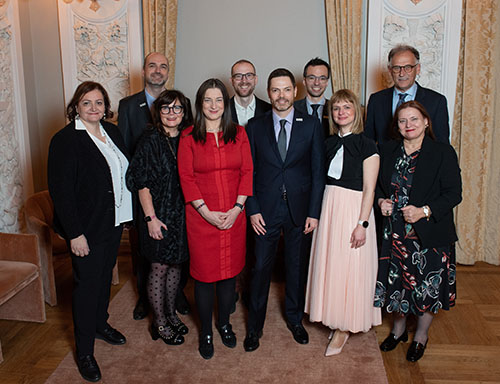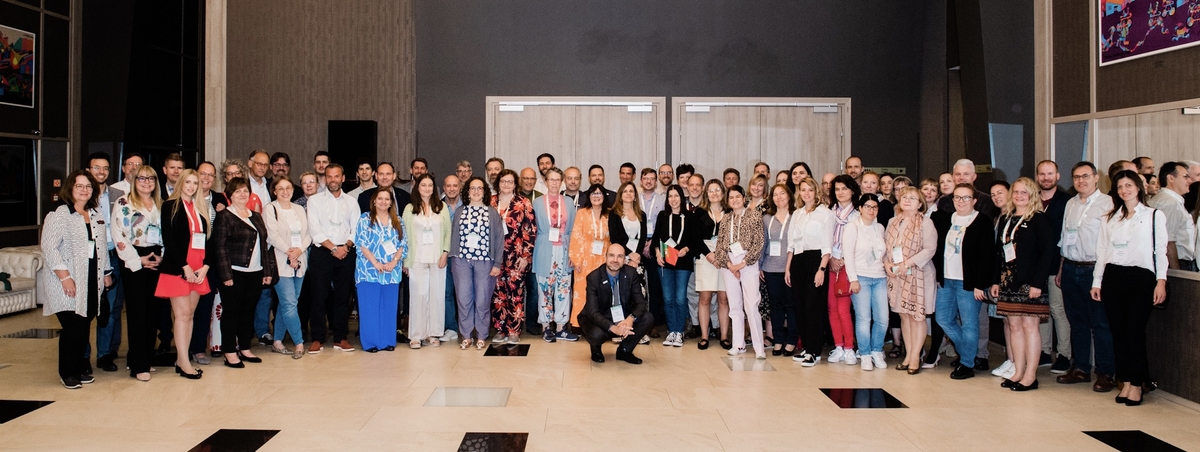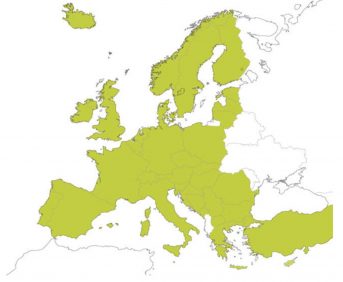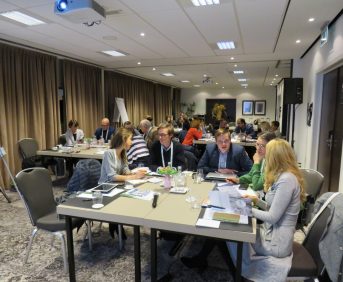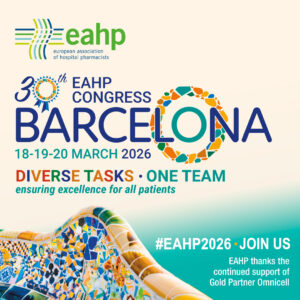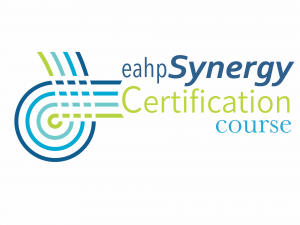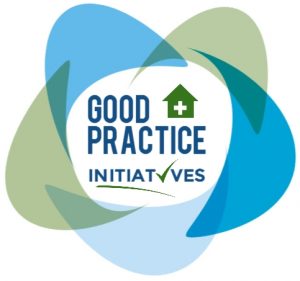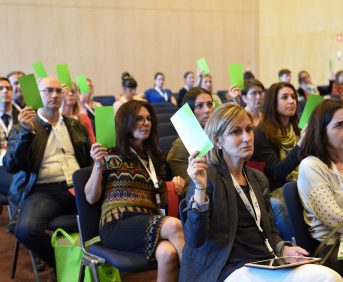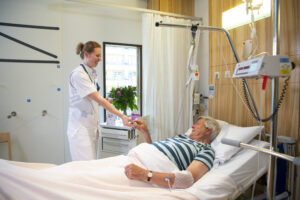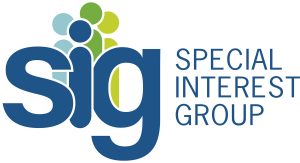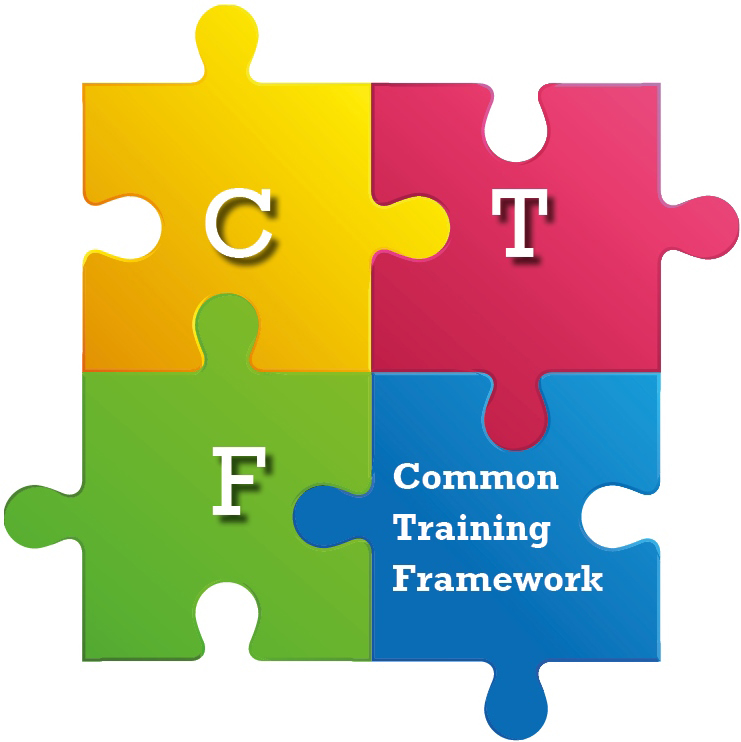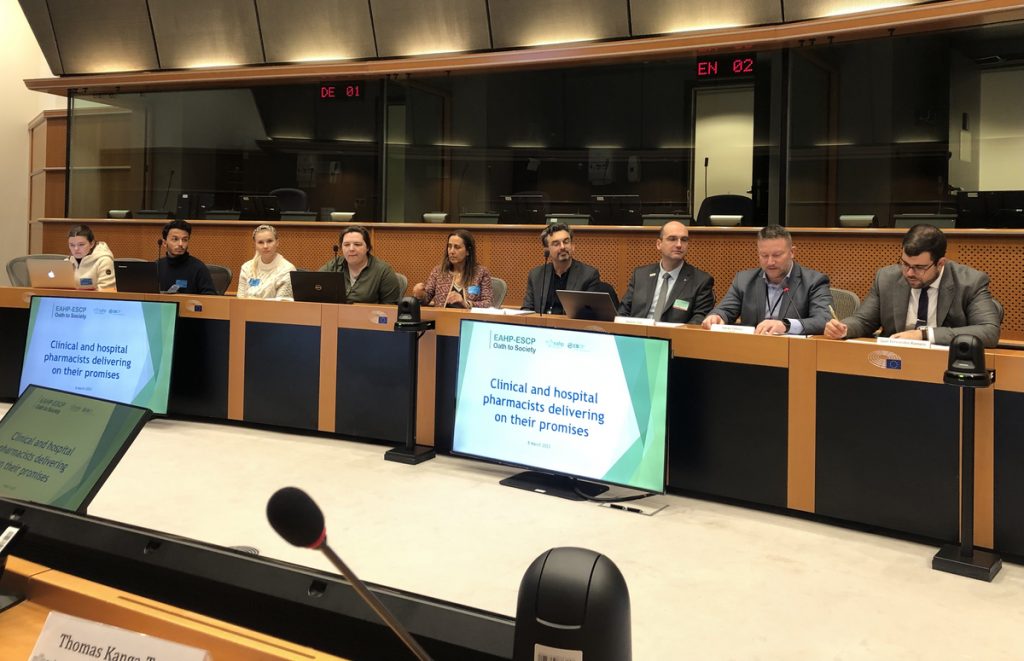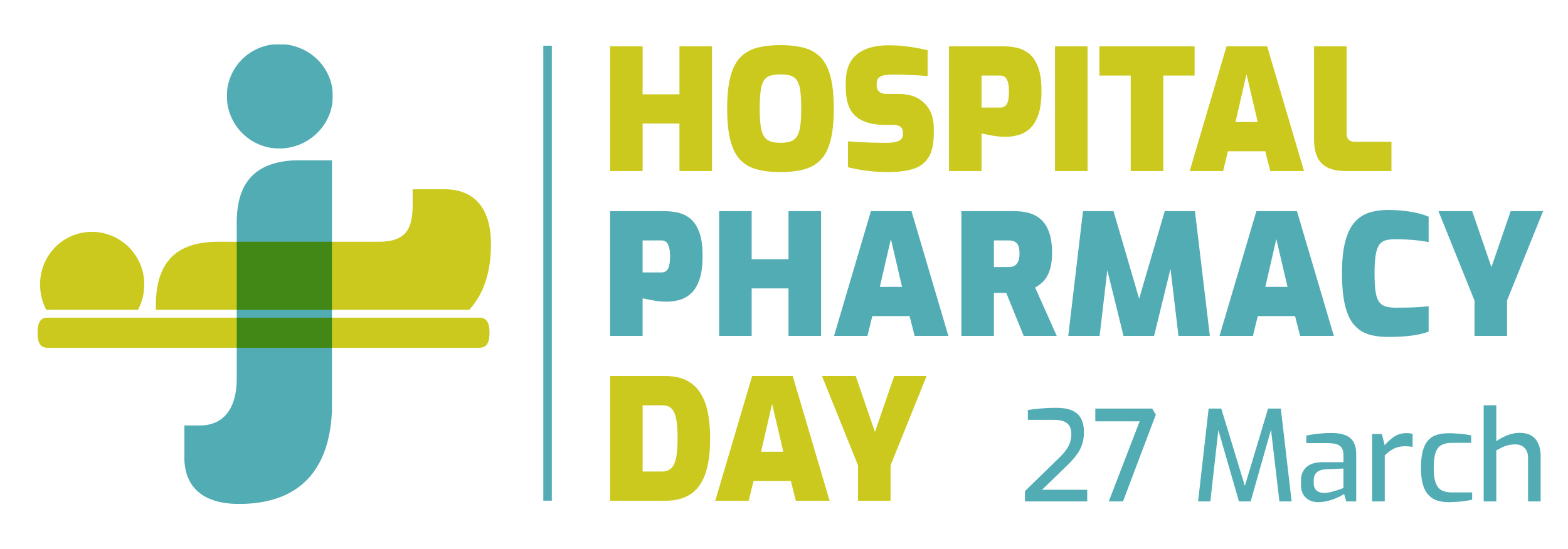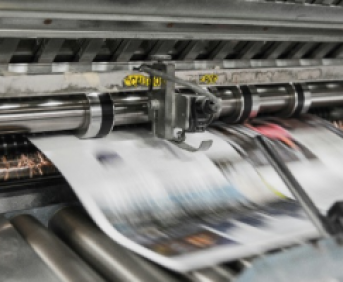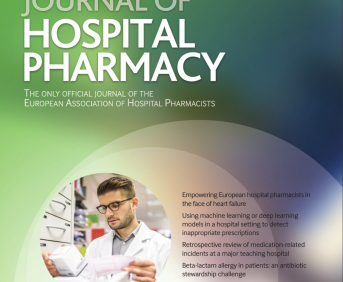Designing a specific critical must-have medicine for our hospital
Pdf

European Statement
Selection, Procurement and Distribution
Author(s)
María Isabel Sáez Rodríguez, Marta Eguiluz Solana, Marta Miranda Magaña
Why was it done?
Shortages are common in our setting. Having a list of critical and must-have drugs (CMHD) specifically designed for our centre allows us to reduce risk of complications due to delays in drugs administration.
What was done?
Monitoring and mitigating potential shortages of critical medicinal products and medical devices by redacting a list of critical pharmacy and health products to have in our centre.
How was it done?
First, we conducted bibliographic research, finding official list of CMHD by FDA, EAHP, and AEMPS.
Afterwards, we crossed those lists with the pharmacotherapeutic guide (PTG) in our centre, identifying those drugs that are considered CMHP, and checking their stock.
Discrepancies between the list provided by official agencies and our PRG were evaluated by the clinical pharmacist, taking into account our centre complexity and surroundings, nearby hospitals and type of patients attended.
With our findings, we redacted a list of CMHP specifically designed for our centre.
What has been achieved?
During our revision, we found discrepancies between our PTG and the official lists of CMHD:
• Some medicines, like certain antidotes, were not considered CMHD. These drugs were included in our list, according to intoxications incidence in our area.
• Lack of stock of must-have products in the official list. Some of them, like coagulation factors, were not considered a CMHD in our centre due to their availability in nearby hospitals. Others, like albendazole, were not included due to low incidence of disease they treated.
Evaluating each drug necessity helped us identify certain health emergencies we may come across in our centre, and prepare for them accordingly. Also, stock revision showed us which medicines have suffered from shortages in the past.
Finally, we achieved our main goal of having a specifically designed list CMHD for our centre.
What next?
Doing a revision of must-have products and adapt it to the centre’s situation enables us to have a better stock control, and serves as a back-up in case of shortages. Our CMHD list must be periodically revised, making sure it adapts to any potential changes in our centre’s situation.
6 months after the implementation of a Good Practice Form (GPF): the example of Versatis
Pdf

European Statement
Selection, Procurement and Distribution
Author(s)
Laetitia ALRIC, Isabelle PLOCCO-DESMONTS, Anne-Laure DUBOIS, Sophie TOUQUET-ARNAUD, Kim NGUYEN, Blandine ARMAND, Isabelle HERMELIN, Audrey LEFRANCOIS
Why was it done?
Versatis is a lidocaine patch used in case of post-zona neuralgia. In June 2021, after a note of concern raised by the OMEDIT (Observatoires du MEdicament, des Dispositifs médicaux et de l’Innovation Thérapeutique) regarding its overuse by staff members of the CHRO (Centre Hospitalier Régional d’Orléans).
What was done?
We analysed the change in prescriptions and consumption since the implementation of a Good Practice Form (GPF) in September 2021, concerning Versatis created in collaboration with the CLUD (Comité de LUtte contre la Douleur).
How was it done?
Analysis of nominative dispensations between 09/21 and 02/22.
Consultation of shared electronic patient records.
Medical evaluation of prescriptions by rheumatology and pain-management physicians.
Methodological strategy validated by the physician in charge of professional practices evaluation.
What has been achieved?
Before the implementation, 3839 patches would have been consumed over a 6-month period versus 1541 after, marking a 59.9% decrease.
The population under scrutiny was made up of 106 patients (male-to-female ratio = 1,3; average age = 64 years). The average number of patches delivered per patients was of 15 (min=5; max=160), with 1,1 patches per localisation, for an average length of treatment of 14,4 days. 97 GPF were archived, representing 91,5% of use.
In-label prescriptions (post zona neuralgia with localised allodynia) concerned 14 (13,2%) patients.
Regarding pertinent off-label prescriptions (neuropathic pain with localised allodynia, with a maximum of 1 patch/zone/day): 36% of patients exhibited neuropathic pain, including 9% with allodynia, with 4% 1 patch/zone/day. 9,4% benefited from rheumatological or pain management consultations.
48% of prescriptions respected the 12/24h rest-time, and 79% the limit of 1 patch/zone/day off-label.
After medical expertise, 3 prescriptions were found to be unjustified – 2 due to lack of information and 1 concerning post-gout crisis pain.
What next?
Despite the patch’s small price, the implementation was of significant impact over the hospital’s consumption (and by extension, over the hospital prescribing dispensed in the community), due to its adoption by over 90% of medical prescribers. This, despite a majority of off-label prescriptions, which were rated as pertinent over 90% of the time. The GPF will have been optimised since this evaluation took place, notably with a more precise definition of allodynia.
Rationalising prescribing of unlicensed specials to children
European Statement
Clinical Pharmacy Services
Author(s)
Helen Cooper, Sheatha Abumehdi
Why was it done?
A lack of licensed formulations for children means that use of unlicensed and off-label medicines is often the only appropriate alternative [1]. Local prescribing data demonstrates wide variability in concentrations of unlicensed specials supplied, at significant cost. This project aims to standardise medicines prescribing for children, improve patient safety by reducing inadvertent dose misadministration due to varying concentrations, reduce spend, and improve the effectiveness of working relationships between hospital and community healthcare teams.
What was done?
Prescribing and procurement data were used to analyse, review and harmonise paediatric prescribing practices in a UK clinical commissioning group, with focus on rationalising use of unlicensed specials.
How was it done?
A target list of ten medicines was identified, based on variability of strengths and formulations available, and cost. A team of two dedicated specialist paediatric hospital pharmacists was funded to set out strategies to standardise prescribing of those target medicines, and to improve understanding of prescribing and supply of unlicensed medicines to children. Various methods were used, including; email communications advertising the roles and support offered; establishing a Paediatric Formulary Group; promoting the local Paediatric Formulary; creating paediatric prescribing pathways; reviewing specials prescribing and supporting switches to alternative formulations; and delivering a paediatric prescribing webinar.
What has been achieved?
Reviews of specials prescribing were initially undertaken in two of the six boroughs in the region. 138 switches to a preferred formulation for safety and/or cost-effectiveness were identified and discussed between July-October 2021. Risks associated with prescribing multiple concentrations of liquid medicines were identified and measures were put in place to prevent patient harm. The webinar was well attended, and although it cannot be quantified, awareness of the Paediatric Formulary has improved. The project is on-going and at this time the impact on spend cannot be shown but will be reported later this year.
What next?
The specific knowledge and skills of specialist paediatric hospital pharmacists are highly valuable in driving specials medicines rationalisation for children in the community. Future plans for expanding the project include extending the service to other boroughs in the region and widening the target list of medicines.
References: 1.Rawlence E et al. Is the provision of paediatric oral liquid unlicensed medicines safe? Arch Dis Child Educ Pract Ed. 2018;103(6):310-3. 2.Neonatal and Paediatric Pharmacists Group. Position Statement 18-01 Using Standardised Strengths of Unlicensed Liquid Medicines in Children. Version 5, April 2020.
DEVELOPMENT OF AN INTERVENTION PLAN FOR THE INTRODUCTION OF BIOSIMILAR DRUGS IN A THIRD LEVEL HOSPITAL
European Statement
Selection, Procurement and Distribution
Author(s)
LEONOR GOMEZ-SAYAGO, INMACULADA LOMARES MANZANO, LUCIA JIMENEZ PICHARDO
Why was it done?
Biosimilar medicines have demonstrated their bioequivalence with the original biologic and there is ample scientific evidence to support this.
Our Hospital had a degree of implementation of biosimilars of 8,16% (the lowest in its autonomous community), so it was decided to develop an intervention plan to increase the use of biosimilars and improve this indicator.
What was done?
Develop a plan to increase the use of biosimilar medicines in a tertiary hospital.
How was it done?
It was decided to intervene on these drugs that had commercialized biosimilar drugs: etanercept, adalimumab, trastuzumab, bevacizumab, enoxaparin, epoetin. For the introduction of biosimilars of etanercept and adalimumab, the medical records of all patients with these prescriptions were reviewed and all those that were prescribed by active ingredient and not by brand-name drug, were changed to a biosimilar medication after consensus with the patients. For the new prescriptions of these drugs and of enoxaparin, trastuzumab, and bevacizumab, a document was prepared supported by the medical direction of our Hospital that would start with biosimilar molecules. Regarding epoetin, in our hospital we had epoetin beta that does not have a biosimilar, so it was decided, agreeing with oncology and hematology and based on the evidence, to change the molecule to epoetin alfa with its biosimilar medicine.
The degree of introduction of biosimilars was measured with the formula: nº Definid daily dose of biosimilar drugs dispensed/nº Definid daily dose of biosimilar drugs dispensed+Definid daily dose of the original biologic *100.
What has been achieved?
Before the implementation of the protocol for the introduction of biosimilars, the degree of introduction was 8,16%, 3 months after implementation the result had reached 21,10% and at 6 months it was 30%. This represents an economic impact of 286.295,53 € per year in savings.
What next?
The implementation of protocols agreed with the prescribers for the introduction of biosimilars should be a common practice of the hospital pharmacists to contribute to the sustainability of the health system.
PERFORMING A COMMITTEE OF EVALUATION OF TREATMENTS IN SPECIAL SITUATIONS
European Statement
Clinical Pharmacy Services
Author(s)
Susana Redondo-Capafons, Laura Soriano, Irene López-Rico, Jorge Del Estal, Rocío Cebrián, Marcela Manriquez, Maria Reventós, Sandra Fernández-Molina, Mònica Gómez-Valent
Why was it done?
Before CTSS was performed, TSS were requested to Pharmacy Department for evaluation and decision. Because of complexity of these treatments, it was decided that it was necessary to evaluate them with other professionals to make a consensual decision.
In May 2019, CTSS was born. It is a multidisciplinary committee with 10 different health professionals: head of pharmacy, head of healthcare management, head of strategy and operations management, a clinical pharmacologist, five pharmacists and a secretary. Requesting doctors and heads of involved services are invited to explain TSS in the meeting.
What was done?
Committee (C) of Treatments in Special Situations (TSS) (CTSS) have been established. Requests are received by a specific email for the committee and a standard template was performed to be completed by requesting doctor (patient clinical information and evidence supporting request) and by Pharmacy Service (regulatory status of the drug, pharmacology and cost of treatment).
How was it done?
Some limitations as lack of human resources with exclusive dedication for making reports and lack of training in evaluation of this kind of treatments are the most important obstacles. Currently, each member is self-taught and under excessive work- pressure.
What has been achieved?
From May 2019 to August 2021, 273 treatments in 59 meetings sessions (average 4.63 evaluations/meeting) were evaluated.
The 91,6% of treatments were approved. In 95,9% of requests, one drug was evaluated.
There were 18 services involved, being oncology and hematology the most active departments.
Evaluated TSS were classified in six categories: 66,7% of requests were drugs without approved indication, 19,8% drugs approved indication pending price by government, 2,5% approved indication but denied funding by government, 1,8% foreign medicines, 4% compassionate use and 5.2% others according to criteria of each autonomous communities in Spain.
What next?
CTSS allows make a consensual decision between different professionals and establishes a flow to manage TSS requests. This multidisciplinary scenario generates knowledge and evidence in the use of these kind drugs reducing uncertainty in TSS use in relation to its efficacy and safety and, in cases of high budgetary impact-drugs, to minimize inequities of access by standardizing decision-making. Applicable to all hospitals.
Preparing for disaster – ensuring and optimizing the supply of medicines to a regional acute Hospital in the event of a major accident
European Statement
Patient Safety and Quality Assurance
Author(s)
Fabrizia Negrini, Giorgia Vella
Why was it done?
The aims of this project were firstly to optimize the content of the stock (choice of medicines and quantity) so that it is suitable for various potential events of different nature that may occur in the region. The second aim was to optimize the management processes in order to reduce costs.
What was done?
To manage extraordinary events (short-lasting phenomenon without contamination) in a region with 1.5 million inhabitants, the hospital pharmacy, in collaboration with a major acute Hospital, manages a designated stock containing medication that may be required during unplanned emergencies.
How was it done?
To achieve these two aims, the first step was to define which major events are possible and most likely to occur in the region. To do this we utilized a risk-based analysis of all disasters and emergencies relevant in the area that was performed by an external company that specializes in developing risk management projects in the context of civil protection1. Based on the identified events, we determined which types of injuries were more likely to occur. The medicine stock was subsequently updated and a process for minimizing the management cost was defined.
What has been achieved?
The hazards that were identified as being of particular importance for the analyzed region are likely to mainly result in blunt, perforating, and burn injuries. In collaboration with the Hospital, a list of 61 different medicines used to treat these types of injuries was established. In order to reduce costs, only drugs which were part of the main stock of the pharmacy were chosen. In this way, it is possible to exchange products with a longer shelf life from the main stock 6 months before expiring and use them without having to discard them.
What next?
In case of extraordinary events in a restricted region, the major acute hospital has an increased need for certain medicines. It is task of the hospital pharmacy to always be ready to supply them with such medicines. This is only possible if the probable emergency scenarios are well understood, and the stock and management processes are well-defined and communicated at all levels.
THE ROLE OF DNA SEQUENCING AND MOLECULAR TUMOR BOARD COUNSELING IN THE SELECTION OF THE MOST APPROPRIATED THERAPY IN ONCOLOGY
European Statement
Clinical Pharmacy Services
Author(s)
Marta Anghilieri, Vito Ladisa, Andrea Vingiani, Giancarlo Pruneri
Why was it done?
The new DNA sequencing techniques, globally defined “Next Generation Sequencing (NGS)”, allow parallel sequencing of many samples producing a big amount of data. To give a comprehensive analysis of the data in order to develop new specific and clinically useful therapies, we have introduced the approach to evaluate the data by the MTB, where pharmacists are included as experts of drugs and their preparation and application.
What was done?
The integration of pharmacists into the first Molecular Tumor Board (MTB), a multidisciplinary group, to select the most suitable therapy for oncological patients.
How was it done?
For every patient pharmacists, together with the members of MTB, study the results of NGS to identify known and unknown alterations utilizing a database available to all MTB members. These mutations represent the basic tool to select potential target therapies. The MTB meets weekly to discuss and integrate the alterations observed with the patient clinical history. At the end this approach allows to select the most suitable target therapy.
What has been achieved?
In this study 208 patients affected by No Small Cell Lung Cancer (NSCLC) were evaluated. The tumor has an elevated mortality, even if many target drug available or in development, therefore a correct treatment approach is essential to improve the clinical outcome. The NSG identified 117 altered genes. After an extensive literature search, 15 genes were identified as potential target of drugs available. They marked 116 patients potentially tractable with target therapy: 47 patients were candidate to a target therapy already in clinical practice and 69 to a target therapy not in clinical practice. Comparing the two groups, in the candidates to drugs in clinical practice the treatment was started in 65% of cases and in 53% was continued, while in the other group the treatment was started in 23% of cases and in 69% continued.
What next?
• The MTB offers a valid support in the clinical practice
• It individuates a target therapy for a greater number of patients
• The selected therapy has a bigger chance to last longer
• The inclusion of Pharmacist in MTB allow a more aware use and a better selection of drugs
PLAN FOR IMPROVING THERAPEUTIC EQUIVALENCE IN A HOSPITAL GPI
European Statement
Clinical Pharmacy Services
Author(s)
LUCIA JIMENEZ-PICHARDO, INMACULADA LOMARES-MANZANO, LEONOR GOMEZ-SAYAGO
Why was it done?
Hospital with 118 beds in which all medication prescribed by the doctor that was not included in the pharmacotherapeutic guide was purchased through an external pharmacy. The proposed objective was to elaborate an improvement plan in therapeutic equivalence, with the development of a TEG
What was done?
Therapeutic Exchange Guidelines (TEG) are an intervention on the prescription according to a previously agreed protoco, in which the prescribed drug is subtituted for the one available in the hospital (because it is considered equivalent or because it is a better therapeutic option).
In this way, the most appropriate drug included in the Pharmacotherapeutic Guide (PG) of the hospital would be selected.
How was it done?
A work schedule was established distinguishing five phases: a) Elaboration Phase, which consists of consulting and review of the medical specialties included in the hospital, b) Presentation / approval phase by the Pharmacy Commission, c) Modifications Phase, d) Disclosure Phase, through a clinical session to the hospital’s internists and other hospital medicians and e) Implementation Phase. For its preparation, a manual was consulted for the writing of TEG, guides from other reference hospitals and different bibliography obtained from Pubmed, as well as the technical data sheet of each drug.
What has been achieved?
The TEG is prepared over a period of 3 months and was structured with the following sections:
Therapeutic group according to the ATC classification of drugs (351), Reference drug included in the PG (443 drugs), Medicines not included
(620) y Recommended therapeutic attitude: substitute the one available at the hospital (469) (specifying dose and regimen), continue (82) or suspend treatment (69).
Subsequently, it was presented to the Pharmacy Commission, the appropriate modifications were made and the final version was released through a clinical session before its publication through the hospital’s intranet.
What next?
The therapeutic equivalence improvement plans are considered efficient management strategies, applicable in all hospitals and health centers. It is a multidisciplinary and continuous process that will require periodic reviews.
Structured implementation to secure rapid and efficient changes of medicines: a national workflow
European Statement
Introductory Statements and Governance
Author(s)
Mikala Vasehus Holck, Jette Østergaard Rathe
Why was it done?
The role of the National Medicines Council (NMC) is to provide guidance about new medicines for use in the public hospital sector.
Recommendations from the NMC must be implemented at hospitals. Implementation of changes of medicines requires preparation and collaboration and involves numerous stakeholders, e.g. drug and therapeutic committees, hospital pharmacies, clinicians, and the national supply organization (NSO) to public hospitals. Knowledge sharing is crucial to ensure efficient implementation.
We needed a workflow focusing on knowledge sharing at national level, and thus we introduced the structured implementation workflow in September 2019.
What was done?
We have established a structured implementation workflow focusing on knowledge sharing. The workflow ensures rapid and efficient implementation of changes of medicines, and a more aligned treatment at national level.
How was it done?
To ensure knowledge sharing through the workflow, we developed:
– Implementation memo: Summarizes NMC recommendations and treatment guidelines, with information about current and upcoming tendering procedures and prices. The memo is shared with the stakeholders.
– Implementation group: The group is a mix of people with a direct connection to the implementation workflow. The group ensures that implementation of the recommendations from the NMC is regularly discussed and assessed.
– Implementation site: An intranet for the NSO and hospital pharmacies to share information and material related to the implementation of changes of medicines.
– A system to ensure that essential stakeholders receive the same information.
What has been achieved?
The structured implementation workflow has been a success and is now an integrated part of implementation. Evaluation shows that the workflow with knowledge sharing between relevant stakeholders is essential for effective implementation of changes of medicines, and it identifies discrepancies at national level.
What next?
The structured workflow is an integral part of managing the national implementation, and the workflow and outcomes will continue to undergo evaluation.
The workflow provides the basis for knowledge sharing and can easily be transferred to other healthcare settings.
Implementation of a tool for annual quality assessment of drug information provided by hospital pharmacies
European Statement
Clinical Pharmacy Services
Author(s)
Dorothea Strobach, Ute Chiriac, Sigrun Klausner, Claudia Langebrake, Christiane Querbach, Carolin Schuhmacher
Why was it done?
Although guidelines for DI demand regular quality assurance procedures, no method of evaluation is internationally agreed on. The tool should be feasible, reproducible and reflect real-life quality of DI. It should allow to identify areas for quality improvement in general and for every participant.
What was done?
We developed a tool for annual quality assessment of drug information (DI) provided by hospital pharmacies on behalf of the German Association of Hospital Pharmacists ADKA e.V.. The tool has been successfully implemented for four years.
How was it done?
We developed a new tool for quality assessment of DI using a fictitious test enquiry and simulated real-life conditions and proved it representative for real-life quality [1]. The answers for the test enquiry are evaluated by blinded experts for content and formal requirements. For four years, 2017-2020, annual assessment of DI was offered to German language hospital pharmacies with changing topics and enquiry levels. Participants receive their own result in comparison to average of all regarding content-related and formal requirements. A proposal for an answer is published afterwards for educational purposes.
What has been achieved?
The annual DI quality assessment tool was successfully implemented as shown by increasing numbers of participating hospital pharmacies (45/71/79/118). Areas for improvement have been identified in general and can be identified by each participant as well. As an example, presentation of references has improved over the years [2]. Since 2018, a certificate of participation is offered as document for quality assurance audits thereby underlining the importance of this hospital pharmacy service.
What next?
Annual quality assessment for DI by hospital pharmacies will be further offered. Results over years will be evaluated for overall effect of the annual test tool on quality improvement regarding content-related and formal requirements. This method for annual quality assessment of DI provided by hospital pharmacies could be implemented by other countries.
References
1. Strobach D et al. EJHP 2020 online ahead of print. doi: 10.1136/ejhpharm-2020-002409
2. Strobach D et al. Krankenhauspharmazie 2020;41:187-91
